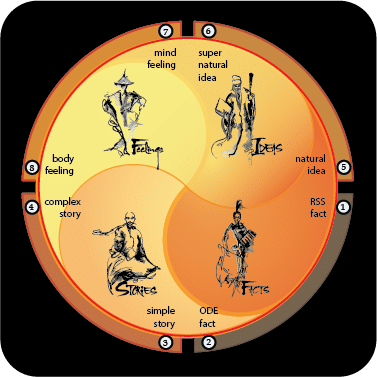The 4 Gender Identities (excerpted from Unraveling Human Nature, 2011)
In this, the 4th and final sublayer of layer 7, we decide how much force, and in what direction, we will act in order to meet the needs we are currently sensing.
Your Gender Identity: Meeting Needs
Okay. So you’ve used your character type to determine who has needs and who should meet these needs. You’ve used your social priorities to determine the kind of needs you’re dealing with. And you’ve used your decision tree to decide on a method by which to try to meet these needs. Now you arrive at the fourth and final sublayer of layer 7—the gender orientation sublayer. What do you try to do here? To see, you’re going to have to start with what may be one of the more controversial and counterintuitive ideas in this book—the idea that your gender identity has two sides—one somewhat fixed and the other rather fluid. By this, I mean that while your gender orientation is indeed largely determined by your biology, influenced by societal pressures, and more or less fixed by age four—your gender presentation is far from the polarized and unchanging schema most people assume gender to be—as in men versus women, masculine versus feminine, straights versus gays, and so on.
So what do I mean by gender presentation, and how does this differ from gender orientation? Start with this.
